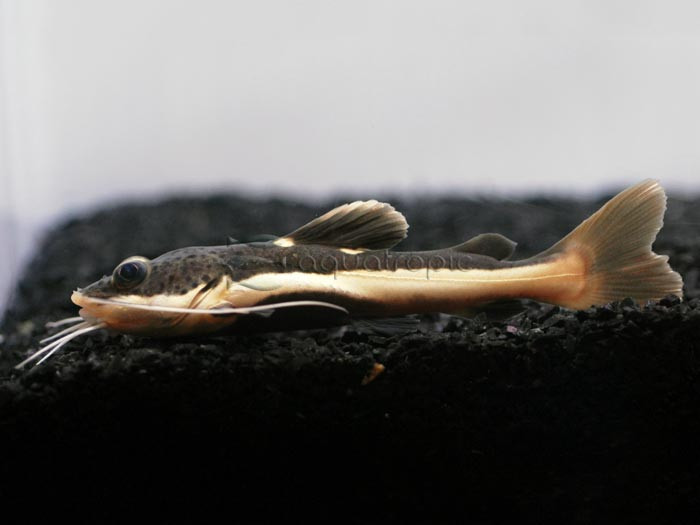Redtail Catfish (Phractocephalus hemioliopterus)

As far as large aquarium fishes go, few are quite so iconic as South America’s beautiful Redtail Catfish. Phractocephalus hemioliopterus is the only member of its genus today; however, the group was formerly more diverse, with several fossil taxa known from the Miocene, 10+ million years ago. The present distribution includes lowland drainages of the Amazon and Orinoco Rivers, where it is generally a common species at the apex of these aquatic ecosystems.
The species is among the largest freshwater fishes, growing to more than 4 feet in length and well over 100 pounds, though, like most big fish, there are tales of even larger ones lurking out there in the murky waters. Unconfirmed reports of 6 foot monsters, weighing nearly 200 pounds exist.
Aquarium specimens may not ever reach those record setting proportions, but they do grow large and fast. The small, aquacultured juveniles regularly seen for sale are a tempting purchase for those naive aquarists who don’t do their homework, but the ultimate dimensions of this fish (and the aquarium that must house it) have to be taken into account. A specimen can easily increase in length by around a foot per year, and it won’t take long until an aquarium measuring in the many hundreds of gallons (or, better yet, a warm pond) will be required to meet this species’ long-term husbandry requirements. Considerable filtration is needed to keep water quality at a high level.
Another important consideration when it comes to husbandry is the tendency this catfish has for ingesting substrate. There are many veterinary reports of surgery being needed to remove large stones or plastic plants that had become trapped in the stomach of this hungry fish. A bare bottomed tank is probably the best bet, both for safety and cleanliness, though a fine sand may be an acceptable alternative for those who prefer a natural look. Large pieces of driftwood and small boulders can complete the aesthetic.
With its large size and capacious mouth, a considerable risk is posed to any tankmate that might be deemed edible. That being said, the Redtail Catfish is noted for being a gentle giant. Good tankmates might include other large catfishes, like doradids and loricariids, along with larger cichlids (Cichla spp.) and bulky characins (Prochilodus, Colossoma). Only the very largest of aquariums is appropriate for this, so be prepared for this commitment. Redtail catfish can live for decades, and public aquariums rarely accept donated specimens. Introduced populations have become a problem in parts of the world, so please remember to never release an unwanted Phractocephalus where it ought not be!